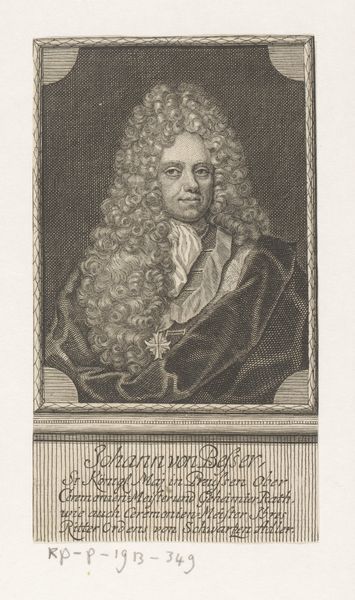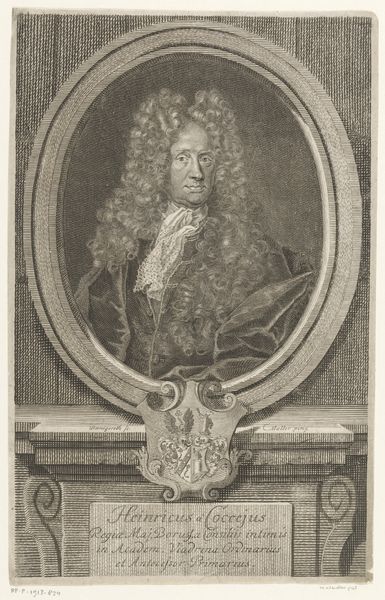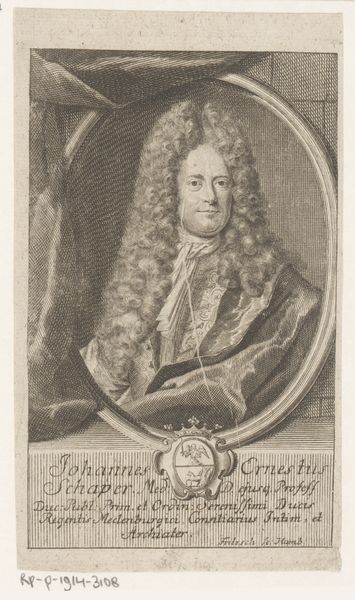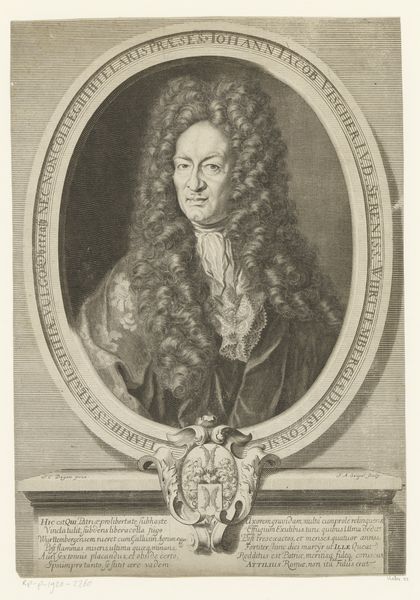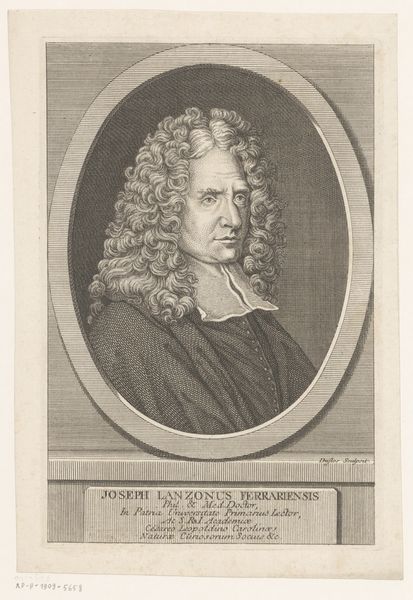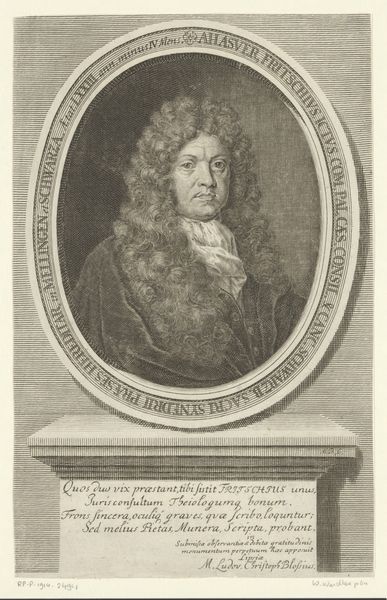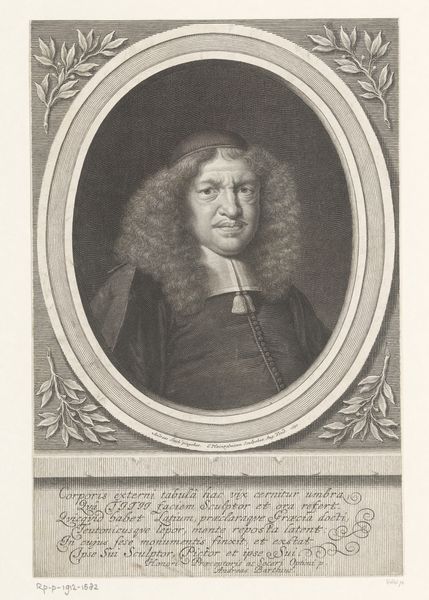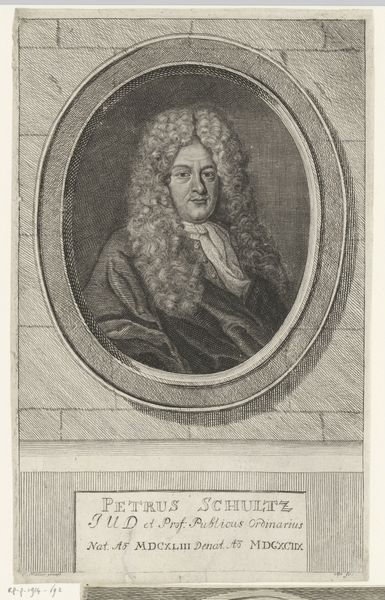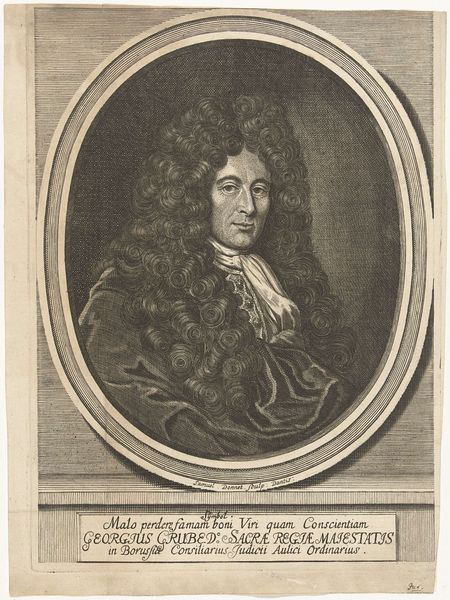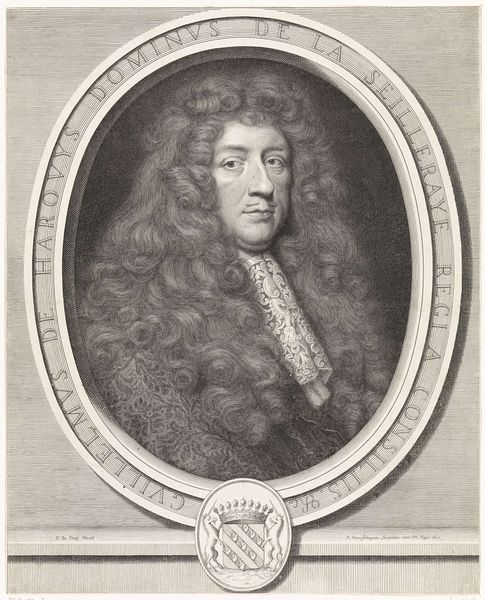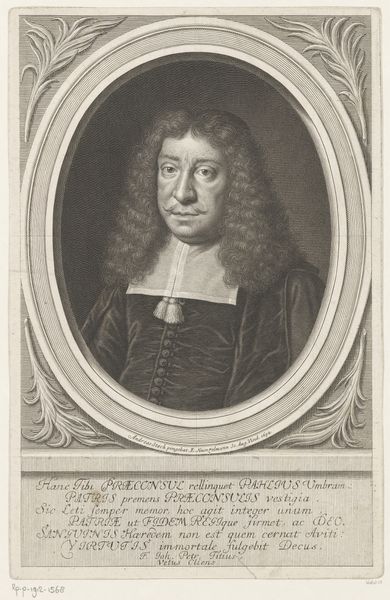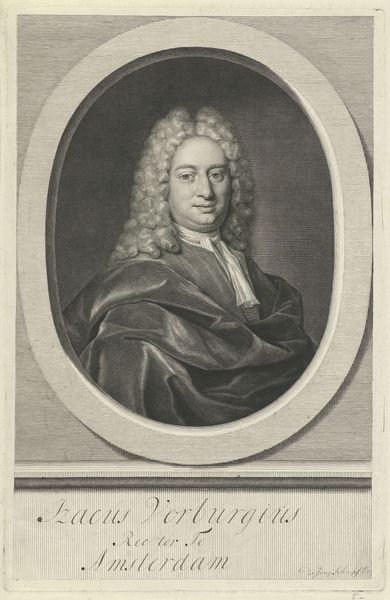
print, engraving
#
portrait
#
baroque
# print
#
portrait reference
#
line
#
engraving
Dimensions: height 145 mm, width 97 mm
Copyright: Rijks Museum: Open Domain
Curator: I'm immediately drawn to the swirling baroque energy emanating from this engraving. The wig dominates; it's almost architectural. Editor: Indeed. We are looking at "Portret van Pierre Mignard," an engraving dating back to 1755 by Etienne Ficquet. This piece, currently held at the Rijksmuseum, presents a striking depiction of the celebrated French painter. It's a classic example of portraiture of that era, capturing not just his likeness but also his status. Curator: Status is clearly communicated through the lines, isn’t it? Look at the way the engraver renders the texture of that luxurious wig versus the starkness of his face. A fascinating contrast. And the oval frame only focuses my gaze onto that face; what is he thinking? Editor: That face speaks volumes when considered against the backdrop of Louis XIV’s France. Mignard was, after all, a major figure, "Premier Peintre du Roi" – the King's first painter! He directed and guarded the royal collection, essentially shaping the visual propaganda of the monarchy. Curator: So the image, with the trappings of grandeur, actively reflects the artist's socio-political placement! Does it offer insight to Mignard's inner thoughts or the machinations of power around him? Editor: It functions almost as a controlled brand management for Mignard; Ficquet creates this image nearly a century after Mignard's death. Think about it – he succeeded Le Brun, even, and the rivalry and aesthetics between the two shaped so much of artistic life at the time! This print solidifies Mignard’s enduring legacy. Curator: Legacy certainly immortalized in this elaborate play of lines and form! Though it appears very detailed, one cannot but ponder what it means to abstract this artist's likeness in monochrome print in contrast with what were likely colorful works on canvas. Editor: Absolutely. And thinking about Ficquet producing this after Mignard’s death, we understand the role of institutions like the French monarchy or indeed the Rijksmuseum where the image resides, in solidifying these stories and memories, or perhaps carefully crafted versions of both. Curator: So, we have an intriguing portrait that functions not only as an artistic composition but also a document of power, influence and historic trajectory. Editor: Precisely. An interplay of artistic representation and the historical currents shaping its subject.
Comments
No comments
Be the first to comment and join the conversation on the ultimate creative platform.
